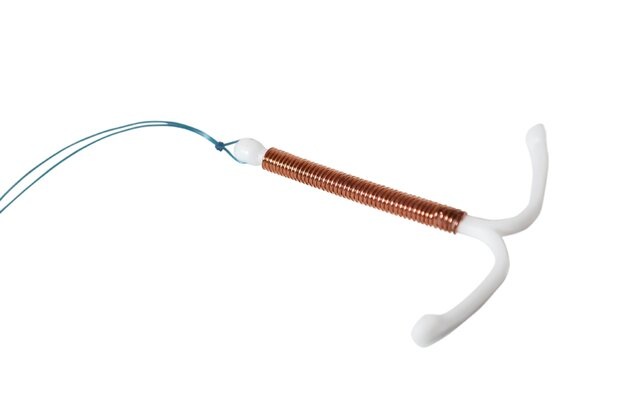Underneath our clothes lies a complex web of decisions about controlling our reproductive destiny. For millions of women worldwide, one decision involved choosing an intrauterine device, commonly called an IUD, as a method of contraception. But are IUDs truly safe? This article seeks to uncover the risks behind this widely used yet still debated form of birth control.
What Is an IUD?
The intrauterine device, or IUD, is a compact, flexible method of long-acting, reversible contraception. It is located within the uterus and has a T shape. Hormonal and copper IUDs are the two primary types.
Hormonal IUDs release progestin, a hormone similar to progesterone naturally produced in the body. This type includes Mirena, Kyleena, Lilett, and Skyla. Mirena is effective for up to 8 years, Kyleena for 5 years, Liletta for 8 years, and Skyla for 3 years.
The copper IUD is called Paragard. It is wrapped with a small amount of copper rather than using hormones. Paragard offers highly effective protection from pregnancy for as long as 12 years.
In total, there are five FDA-approved IUD brands on the US market. Hormonal IUDs prevent pregnancy primarily by thinning the uterine lining, while Paragard’s copper ions create an inflammatory environment inhospitable to sperm and egg implantation. Placement of any IUD is generally a brief, in-clinic procedure. Once inserted, IUDs require no ongoing maintenance or monitoring to remain effective. This makes them a discreet, long-term contraceptive option.
How Effective are IUDs for Birth Control?
IUDs are among the most effective forms of reversible birth control. Both hormonal and copper IUDs have pregnancy prevention rates over 99%, making them more reliable than daily contraceptive pills.
In terms of emergency contraception, the copper IUD is considered the gold standard option. Over 99% of possible pregnancies can be avoided with an IUD placed within five days of sexual activity that is unprotected. This is a much higher effectiveness than emergency contraceptive pills.
Factors like body weight don’t impact how well an IUD works at preventing pregnancy. Pills may be less effective for those weighing 165 pounds or more. IUD effectiveness remains consistently high regardless of a person’s physical characteristics.
While pills require taking them as directed with no missed doses to be effective, IUDs don’t need ongoing adherence once placed. Their long-acting nature provides highly reliable pregnancy protection for years without disruption.
For those seeking very effective, long-term birth control, they don’t have to think about daily. An IUD offers peace of mind. Their track record confirms IUDs as a top-tier contraceptive choice.
How Risky Are IUDs?
While highly effective, IUDs can potentially cause some side effects. Pain during insertion is common, though brief, and usually managed with medications. Ongoing cramps and irregular bleeding are also typical in the initial months as the body adjusts.
More serious but rare risks include perforation during placement or migration of the IUD within the uterus. This can potentially lead to injuries like internal bleeding or pelvic inflammatory disease if left unaddressed.
Another possible but rare complication is infection. Most adverse effects are temporary and mild. However, risks may be higher with specific IUD models. In contrast to hormonal IUDs, TorHoerman Law reports that the Paragard copper IUD has been linked to a higher incidence of health issues.
In some cases, Paragard fracturing or migration has caused organ damage and required invasive surgery to repair injuries or remove fragments, leading some patients to consider filing a Paragard IUD lawsuit.
While IUDs offer highly effective birth control, potential risks – especially with certain designs – should be considered. Patients concerned about side effects or rare complications may prefer alternative long-acting reversible contraceptive options. Ongoing monitoring of potential issues is important.
Natural Methods You Can Explore
Natural family planning can be used in a number of ways to prevent conception. One of the first methods based on monitoring a woman’s menstrual cycle is the rhythm method. A normal cycle typically lasts between 28 and 32 days, with ovulation usually occurring around day 14.
With this method, one avoids unprotected sex from days 8 through 19 of the cycle to prevent intercourse during the most fertile window. It’s best to consult your doctor on how to properly utilize the rhythm method for your individual cycle.
Another option is the cervical mucus or ovulation method. This involves monitoring the texture and quantity of cervical mucus on a daily basis. When a woman is ovulating, the mucus appears clear, stretchy, and wet, similar to raw egg whites. By recording the observations of one’s cervical mucus each day, it helps indicate when ovulation is taking place.
The basal body temperature method also tracks changes related to ovulation. A woman’s basal body temperature tends to rise between 0.5 to 1 degree when ovulation occurs and remains elevated until the next menstrual period starts. This approach involves taking a temperature as soon as possible in the morning, prior to moving out of bed, eating, or drinking anything.
While basal body temperature alone isn’t very effective for preventing pregnancy since it only identifies ovulation in hindsight, combining it with cervical mucus monitoring comprises the symptothermal method. Using multiple natural family planning approaches can provide a clearer picture of one’s fertility signs.
Overall, the complexity of reproductive healthcare underscores the importance of open discussion between patients and medical providers to make fully informed choices based on individual needs and circumstances.
Further research on IUD safety may also continue to evolve best practices over time. In the meantime, personal preference and risk assessment should drive each person’s unique path toward controlling their reproductive destiny.

